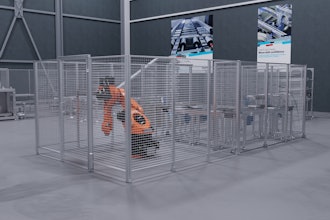I have to admit I had a terrible tendency to procrastinate in my junior high years.
In fact, I turned the advice of Ben Franklin's Poor Richard on its head by never doing today what I could put off till tomorrow. And though I survived and even moved on to high school and beyond, I paid a price for regularly delaying what I knew needed to be done promptly. Late nights, lower performance (measured in grades), pleading discussions with teachers and my parents - all could have been avoided but were painfully routine due to my dilly-dallying.
The same can be said of many companies unwilling to invest appropriately in support of business growth and/or channel diversification. When a phased strategic plan for distribution center(s) is developed in advance, its execution can then occur as throughput trigger points or other relevant milestones are reached. This in turn enables a business to grow successfully with consistent delivery service and at a reasonable distribution cost basis.
Without a thoughtfully developed plan and its timely execution, we see many organizations whose growth is constrained by the distribution operations or whose reputations are tarnished through inconsistent or insufficient levels of customer service.
In addition to the issues mentioned above and their potential long-term detrimental impact, the longer the needed improvements are delayed, the more costly and challenging they are to implement. We often work with clients who have completely outgrown their distribution capabilities, and are subsequently forced to implement short-term corrections. These "solutions" include the use of outside storage, the addition of shifts and regularly scheduled weekend overtime, and the employment of excessive numbers of temporary employees.
These ongoing operational costs add up quickly. The implementation itself also becomes more challenging and costly, since the time available to tear down/remove, rearrange, install and test equipment becomes very limited. The lack of downtime availability along with limited "elbow room" to work normally extends the length of time for the implementation and requires more costly, off-shift installation hours.
We often find that the local operations team is chomping at the bit to plan and implement the changes needed to keep pace with its business needs, but their senior management is unwilling to fully engage until it is too late.
How does an operations manager/director overcome this?
The key is to develop a comprehensive plan, including decision points or milestones for action. It is imperative that senior management team members fully buy in to the plan. More critically, they must clearly understand the consequences if it is not faithfully followed. The repercussions of procrastination should be outlined in terms of expected cost increases per unit or as a percent of sales; and the points (e.g., volume, velocity, accuracy, etc.) at which the distribution center(s) will be unable to perform to organizational standards should be clearly identified.
We have all seen examples of senior management's confidence in the operation team's ability to pull another rabbit from the hat, as they have always done in past crises. But one of these days, that hat might have a hole in it. It is essential, therefore, that you communicate the very real operational consequences and bottom-line impact that will become manifest through procrastination.
To view the original article on the FORTE blog, please click here.






















